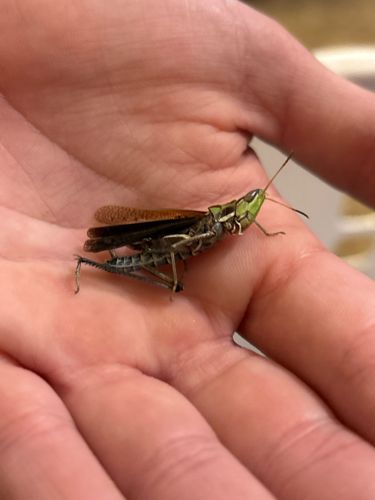Grasshopper
Scientific Name: Various species within the family Acrididae (e.g., Melanoplus differentialis, Schistocerca americana) are commonly referred to as grasshoppers. Without a more detailed view or location, a specific scientific name cannot be provided.
Order & Family: Order: Orthoptera, Family: Acrididae (short-horned grasshoppers) or other families within Orthoptera like Tettigoniidae (long-horned grasshoppers)
Size: Generally range from 2 to 13 centimeters (0.8 to 5 inches), depending on the species. The one in the image appears to be a medium-sized individual, likely in the 3-6 cm range.

Natural Habitat
Found in diverse habitats worldwide, including grasslands, meadows, agricultural fields, forests, and desert environments. They prefer areas with abundant vegetation for food and cover.
Diet & Feeding
Herbivorous, feeding on a wide variety of plants, including grasses, leaves, and crops. Their diet can vary depending on the species and availability of vegetation in their habitat.
Behavior Patterns
Grasshoppers are primarily diurnal and are well-known for their jumping ability, which is primarily used to escape predators. They can also fly using their hind wings, which are typically folded under their tougher forewings when at rest. Males often produce sounds (stridulation) by rubbing their hind legs against their forewings or abdomen to attract mates.
Risks & Benefits
Risks: Can be significant agricultural pests, causing widespread damage to crops and pasture lands, especially during outbreaks (locust swarms). Benefits: Serve as an important food source for many animals, including birds, reptiles, amphibians, and mammals. They also contribute to decomposition of plant matter and nutrient cycling in ecosystems.
Identified on: 8/14/2025